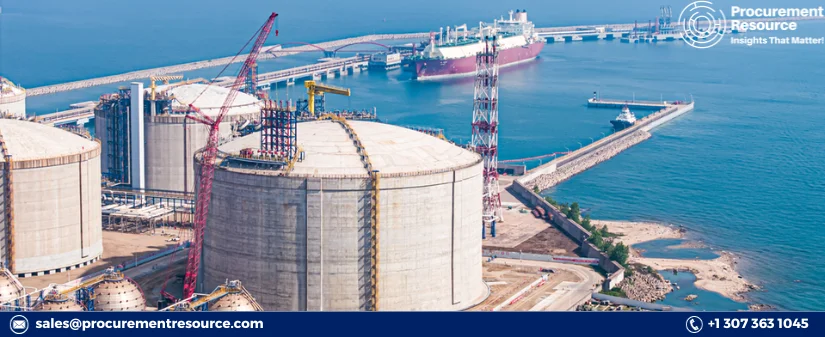Sinopec marks inauguration of China’s largest LNG storage tank at the Qingdao LNG Receiving Terminal, Shandong

China Petroleum & Chemical Corporation (Sinopec) has reportedly inaugurated what is considered China's first, as well as the largest in the world, liquefied natural gas (LNG) storage tank. Situated at the Qingdao LNG Receiving Terminal in Shandong, this colossal tank boasts a capacity of 270,000 cubic meters. It is poised to significantly bolster the storage capabilities of the terminal, purportedly enabling it to cater to the gas consumption needs of about 2.15 million households for a duration of five months over the winter period.
Request Access To The Latest Price Trends of LNG
This cutting-edge tank, which was designed, developed, and constructed by Sinopec itself, incorporates 17 patented technologies and was remarkably completed in its main structure within an 18-month time frame, becoming fully operational after 27 months.
In a related development, Sinopec has made public the completion of the second phase of its Tianjin LNG Receiving Terminal. This phase includes the operationalization of three additional storage tanks, each with a 220,000 cubic meter capacity. This expansion is set to contribute over 400 million cubic meters to the natural gas storage capacity, elevating the total capacity of the Tianjin site to an unprecedented 1.08 billion cubic meters, which stands as the largest in China.
With these updates, Sinopec’s LNG terminals located in Qingdao and Tianjin, which encompass seven and nine storage tanks respectively, now have a collective storage capacity amounting to 1.68 billion cubic meters. This enhancement in storage capacity is a strategic move by Sinopec to ensure an uninterrupted supply of natural gas during the high-demand winter season.
Sinopec's current LNG storage infrastructure includes approximately five billion cubic meters of capacity, with the company having established 12 natural gas storage depots, among which are the Zhongyuan cluster, Jintan, Wen 96, and Jianghan Yanxue. Moreover, Sinopec is actively expanding the LNG receiving facilities at Tianjin and Qingdao.
With an eye to the future, Sinopec is focused on constructing additional natural gas storage sites and LNG receiving terminals across China. This initiative is part of the company's broader objective to reinforce the natural gas storage framework, enhance the adjustment capacity for peak gas consumption periods, and to increase LNG storage capacities as a component of its five-year strategic plan.
According to the article by Procurement Resource, Sinopec has launched the world's largest LNG storage tank in Qingdao, China, with a 270,000 cubic meter capacity to support 2.15 million households over winter. Built in 27 months, featuring 17 patented technologies, it's part of a significant expansion including Tianjin Terminal's second phase, now at 1.08 billion cubic meters capacity. Total storage across both Qingdao and Tianjin terminals is 1.68 billion cubic meters. Sinopec, with a vision for further growth, maintains around five billion cubic meters of LNG capacity and plans more storage facilities as part of its five-year plan.



